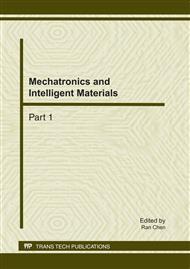p.40
p.48
p.57
p.62
p.68
p.72
p.78
p.82
p.87
Design of Chongqing Tourism Information System Based on WebGIS
Abstract:
In modern society, informationization is becoming more for the lasting development of tourism. The design and application of Tourism Information System (TIS) is an important power to pull tourism development, then it’s very important to strengthen the constrution of TIS. WebGIS is an very important trend of Geographic information system (GIS). It not only has the general characteristics of GIS, but also has the special characteristics of Internet, thus it becomes the first platform for TIS. With the help of WebGIS, tourism enterprises can improve the management efficiency and service leve. In this paper, the research status of TIS at home and abroad has been discussed, the characteristics and functions of WebGIS has been analysed. Finally, according to the tourism characteristics of Chongqing city, the tourism information was divided into several typies, and then the design of space database,property database and Decision-making support systems has been analysed.
Info:
Periodical:
Pages:
68-71
Citation:
Online since:
February 2011
Authors:
Price:
Сopyright:
© 2011 Trans Tech Publications Ltd. All Rights Reserved
Share:
Citation:


